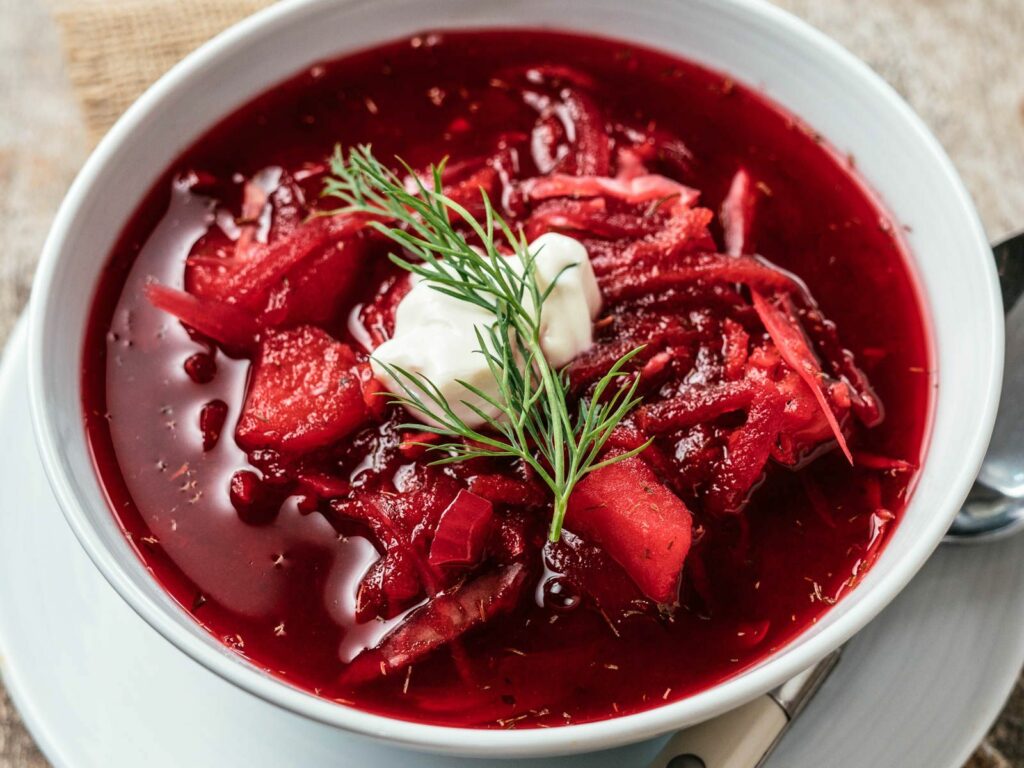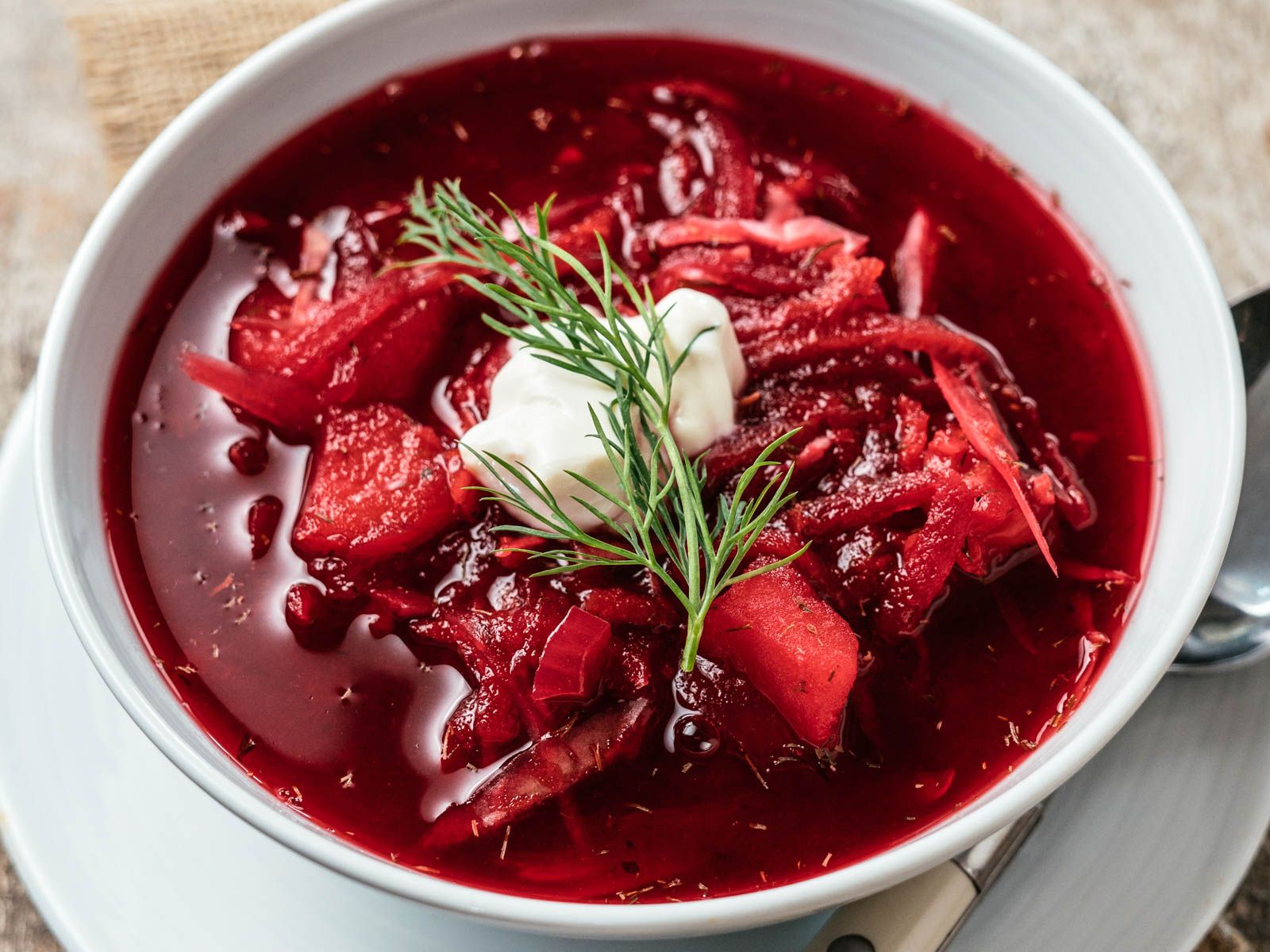Stir it Up; A Plea For Russian Borsch in the DH – Daniil Dildyaev
Let’s talk about the matter of soups.
At RHS, some pupils may sadly agree that, whilst soup plays an essential role in many cultures and forms part of a meal, the selections of soup in the DH may not be as wide as others may wish it to be. Understandably, it is hard to cook a complex soup for the whole school, especially when the school is trying its best to cut down on food waste.
However, it may come as a surprise to see that many people aren’t eating soups during lunch. I myself believe it to be an essential part in anyone’s diet at least once in a while. The fact that they are an uncommon sight leads us to believe that soups are bad, which to be honest – they’re not.
The soups in our school may not have the best reputation, but I believe I’ve got a solution up my sleeve: Borscht. (N.B. in Russia it is borsch, but the English have decided to add a ‘t’ at the end.) Borscht is an epitome of Russian cuisine, and often referred to as the most famous Russian dish, and truth be told, the Russian Federation used to be a part of the USSR. The red colour association has been in our minds, what feels like, forever. Therefore, it doesn’t come as a surprise to have people so strongly linking the red dish and Russian culture.
In my home country, which is Russia, we have a lot of different soups, and people eat them nearly on a daily basis. I do feel a missing link in my meals. Red borscht, however, may be an answer to it. It consists of meat, carrot, potato and beetroot, which gives it its famous colour. This combination surely appeals to most people. If they can overcome their initial fear of eating something this red. It is incredibly tasty and I feel, mixing up the soup menu a little bit would have quite a positive effect, not just on us Russians.

I find different takes on borscht in their various hues of strawberry and crimson to be heartbreaking in their loveliness and I admire the contrast of the soup and the dollop of white sour cream, dotted with grass green chives. Therefore, we could implement this marvellous delicacy without the expense of sticking to one recipe, as it could be easily interchanged and tweaked for suit the DH food production.
Of course, being brought up in Russia and Kazakhstan, my experience with a bazar-bought vegetables, and the best, freshest horsemeat, the best bowl of this particular food was handmade with love by my babushka (Eastern European/Slavic word for grandma).

Through years of travelling to Alma-Aty, Moscow, Kaliningrad, Astana, Crimea and even Tatarstan, I’ve realised that there is a variety of different ingredients that can be used, and even multiple methods of cooking the dish. This leads me to believe there is no right or wrong way to prepare it. Just like with any other opinion-based problem – we all have different tastes, and there is no one-size-fits-all solution.
Finally, I wanted to conclude with my respect for the kitchen staff, and the fact they keep nearly a thousand of pupils and staff fed each day. But I think a small experimental change to see how it works out wouldn’t be such a bad idea, because, as we say in Russia –one, who doesn’t take risks doesn’t drink champagne.















Post Comment
You must be logged in to post a comment.